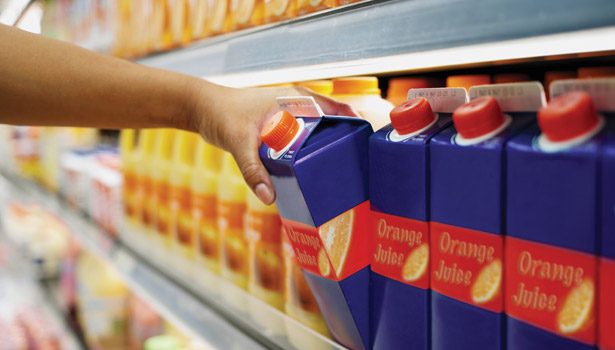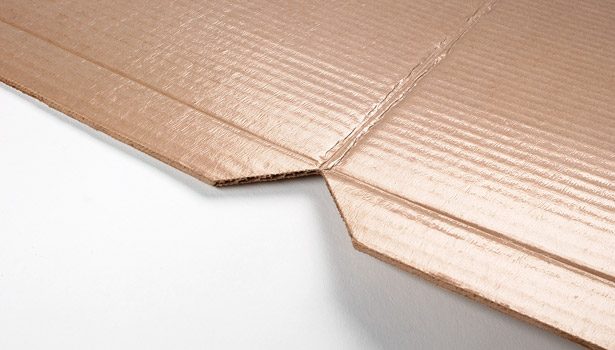Think artificial turf, personal care items, carpet backing and pizza boxes have nothing in common? Think again. With advancements in coating technology, the manufacturing industry is constantly seeking solutions to deliver new and innovative high-performing materials that address the supply chain and consumers’ needs.
Quality resins, adhesives and coatings are in high demand to ensure performance isn’t compromised while sustainability goals and budgets are met. Whether manufacturers are seeking to combat humid conditions or create an absorbent yet soft bandage, water-based polyolefin dispersions can help.
Process Advancements
Recognizing the need for high-performing, water-based coating solutions, Dow Packaging and Specialty Plastics patented the BLUEWAVE™ process technology. The process takes molten polyolefins and disperses them in water, allowing manufacturers to create coating materials out of ubiquitous, non-self-dispersing polyolefins or plastomers.
Dow’s 2009 acquisition of Rohm and Haas united Dow’s polyolefin expertise and Rohm and Haas’ emulsion knowledge, which resulted in the development of a robust technology that has led to the acceleration of next-generation product development. HYPOD™ water-based polyolefin (PO) dispersions are one such novel product, a portfolio of coating materials that continues to build on the impact made in the packaging, carpet, artificial turf, personal care and hygiene industries by offering a slew of advantages. The technology makes it easier for converters to develop existing structures and create new ones for a range of applications, including food packaging, artificial turf backing, diapers, modular carpet, and wound care.
In the past, manufacturers were forced to choose between traditional ester acrylics, styrene butadiene rubber (SBR) latex or vinyl acetate emulsions for their coating needs. Now, the PO dispersion technology in a water-based system serves as another option.
Performance
Over the past several years, Dow worked closely with customers to tailor the multifunctional coating technology to meet specific demands and create versatile solutions. While traditional dispersions offer only a few advantages, HYPOD dispersions deliver a multitude of performance, design and manufacturing benefits, including:
• High molecular weight and solids content
• Improved control compared to incumbent materials during coating in either the spray or foam format
• Enhanced end-of-life recyclability
• Ability to create differentiated products or structures not available before on existing water-based equipment
• Capacity to provide polyolefinic properties such as sealability, toughness, and haptics options like soft touch or optics in a water-based coating
HYPOD dispersions have shown to provide unique performance capabilities for each particular market. For example, in the packaging sector, the technology offers heat sealability to polar substrates such as metallic or foil and non-polar substrates like polyethylene (PE) and paper, and delivers low viscosity for packaging design flexibility. The materials are also generally compliant with European Union (EU) regulation 10/2011 with some SML limits and the U.S. Food & Drug Administration (FDA) food contact regulations.
As for artificial turf and carpet applications, unlike traditional thermoplastic conversion processes and waterborne products, HYPOD can introduce olefinic performance benefits to latex applications, impart exceptional wet strength and tuft lock, and give manufacturers the potential for lighter weights. As a result of increasing the tuft bind, the dispersions can withstand tougher wear and tear while giving athletes a tailor-made surface that addresses their sport’s particular performance requirements.
Sustainability
According to Dow’s Sustainability Footprint Tool©, the solution gives potential sustainability advantages compared to incumbents. The tool, which considers six sustainability dimensions with lifecycle thinking, shows that HYPOD dispersions require fewer binders than conventional applications; maintain a faster, more efficient drying time; use less material and are recyclable in mainstream municipal channels; and deliver the opportunity for less water and energy consumption. In artificial turf applications, for example, thermoplastic olefins tend to be more compatible with yarn fibers, making it easier to recycle at the end of the product’s lifecycle and decreasing the need for excessive handling and separation.
The water-based polyolefin dispersion portfolio also helps create a safer environment for workers, eliminating organic and volatile organic solvent emissions compared to existing solvent-based coatings. With HYPOD dispersions, converters are able to decrease their emissions and increase workplace safety.
Convenience and Cost Savings
As an easy-to-use drop-in, the water-based solution can be quickly incorporated into existing production lines. In addition, it doesn’t require new machines or additional employee training, making it cost effective. For packaging applications, it provides lower production costs through thinner coatings on industrial horizontal form fill and seal (HFFS) lines and vertical form fill and seal (VFFS) lines, and can deliver lower energy costs through its higher solids content with lower drying times.
While cost remains a top priority for supply chain members and brand owners, the solution does not withhold on performance at low coating weights. HYPOD maintains enhanced pitch durability in artificial turf applications and provides end users with improved surface performance. In personal care and hygiene applications, fabrics that use HYPOD dispersions offer a balance between resiliency, shape, and stiffness. It also offers sealability, moisture protection, haptics modifications and better control of surface tension for improved tufting.
The HYPOD dispersions portfolio is just another example of how chemical companies play a vital role in the supply chain. From performance benefits, easier end-of-life options and the patented BLUEWAVE™ Process Technology, HYPOD dispersions are impacting the manufacturing industry by highlighting a new solution that can be used to improve a variety of applications.
For more information, visit www.dow.com/dowpod.





